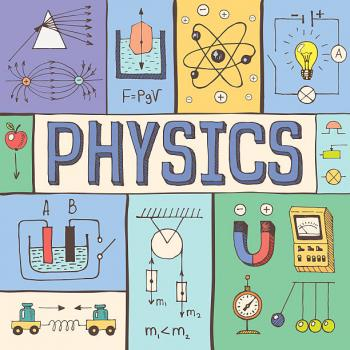PHYSICS COURSE SYLLABUS
INTRODUCTION
Physics is the science that seeks to understand the fundamental principles governing the universe, from the motion of objects to the forces and energy that shape our world. This course introduces students to the foundational concepts of physics through engaging theoretical discussions, practical applications, and experimental work. Additionally, the course will be taught in English, enhancing the students' language proficiency and preparing them for global academic and professional contexts.
GENERAL OBJECTIVES
Understand and value science and its implications.
Consider science as a human activity that has benefits and limitations.
Create an analytical, inquiring, and flexible mindset to ask questions, solve problems, elaborate explanations, and judge arguments.
Develop skills to design and conduct investigations, evaluate evidence, and reach conclusions.
Become aware of the need to collaborate and communicate effectively.
Apply their knowledge and language skills in a variety of real-life situations.
Develop sensitivity towards living and inert elements of the environment.
Reflect on learning experiences and make informed decisions.
COMPETENCES / ABILITIES TO DEVELOP
Through this course, students will:
Build a foundational understanding of physics as a tool to explain natural phenomena.
Develop critical thinking skills, such as observation, analysis, synthesis, and argumentation.
Enhance organizational and collaborative skills through group work and projects.
Strengthen abilities in scientific inquiry and experimental design.
Cultivate creativity and adaptability in applying physics knowledge to solve complex problems.
METHODOLOGY
Student guided inquiry.
Master class.
Workshops.
Laboratory practices.
Unit guided projects.
Expositions.
Discussions.
Consolidation of own ideas from audiovisual material.
CONTENT AND CONCEPTS
Unit 1: Energy and its transformations
The concept of energy
Energy types
Energy transformations
Mechanical energy
Conservation of mechanical energy
Unit 2: Movement
Types of motion
General equations for motion study and prediction
1 stage motion
x-t graphs and v-t graphs
Unit 3: Dynamics
The concept of work as a transference of energy
Forces and types of forces
Net force
Unit 4: Newton Laws
Newton Laws
Momentum
Collisions
EVALUATION PROCESS
Formative assessment | Expositions where the students explain the goal and the results of scientific research to their classmates, stating if they consider that the research was carried out properly. Visible Thinking techniques are going to be used as much as possible to encourage the students in their learning process. Development of readings from the students of scientific research, followed by an exposition of the analysis made. Group gatherings between students, where they confront a certain topic, with a goal of formulating a conclusion about scientific research based on the result of it. Laboratory or simulation experiments will consolidate the importance of what students learn, and how that knowledge can be applied. |
Summative assessment | Exams, expositions, and oral presentations will show the student’s ability to analyze information. Essay or text elaboration will evaluate the capacity of the student to describe inquiries with a scientific context. Debates will test how the students can express the concepts elaborated by them, supported by scientific information.
|
Assesment criteria |
Knowledge and understanding – 25% |
Inquiry and design – 25% |
Processing and evaluation – 25% |
Reflection on the impact of science – 25% |
RESOURCES
Resources | |
Technological | Computer and calculator |
Bibliographic | MYP guidebook, Helmer Pardo content guidebook |
Physical | Notebooks to take notes on. |
Behavioral recommendations for the proper development of the class | The classes will be carried out under an atmosphere of respect, where the school’s rulebook guidelines will prevail. The use of electronic devices will be allowed and supervised by the teacher. Punctuality is primordial; all students must be willing to receive the class in the best possible way |

- Profesor: Jorge Alejandro Perez Garcia
- Profesor: Brandon Suarez Jiménez